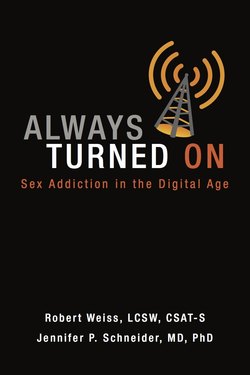Читать книгу Always Turned On - Jennifer Schneider - Страница 5
На сайте Литреса книга снята с продажи.
INTRODUCTION DIGITAL TECHNOLOGY AND OUR EVER-CHANGING WORLD
ОглавлениеWhen I was in school, it took me two days to type my senior term paper. Every time I made a typing error, it took me about five minutes to fix it. And this was after I’d spent twenty or thirty hours in the school library, poring over the card catalog. Yesterday my granddaughter started her paper at 9 a.m., and she was done by 3 p.m. Her research took about twenty minutes, and any changes she wanted to make took about half a second. As a grandmother, I don’t know if I’m in love with digital technology, but I sure would’ve liked it when I was in high school.
—Martha, sixty-four, grandmother
When I was a kid, my dad worked overseas for three months at a time. Home for a month, gone for three; home for a month, gone for three. We sent letters back and forth every week, but most of the time it felt like he wasn’t a real part of our family. And I know that my mom really felt abandoned. Today, I’m in the armed forces serving overseas, and it’s totally different for me and my family. I see my wife every day on Skype. We talk about everything using webcams and texts, as if I’m right there with her. Last week she took her iPhone to my kid’s baseball game and turned on the webcam. I watched the whole game. It was awesome. I even went to ice cream with the family afterward, even though I’m thousands of miles away.
—Ray, thirty-seven, Army ranger
Statistics tell us that there are well over two billion Internet users worldwide.1 Asia leads the way with more than a billion users. The United States has over 273 million users (more than three-quarters of the population). The least technologically developed continent, Africa, has just over 167 million Internet users, which is about 15 percent of that continent’s population. However, the number of African users is rapidly growing, increasing by 3,600 percent since the year 2000. Overall, more than one-third of the world’s population is online, and that percentage increases daily.
For those actively involved in life online, it is difficult to fathom human existence before the Internet. If you travel a lot for work or pleasure you are undoubtedly grateful that smartphones, webcams, and social media provide easy and inexpensive ways for you to keep in touch with family, friends, coworkers, and the world at large. Digital technology is also incredibly useful if you’re in or developing a long-term, long-distance relationship, as texting and webcams allow you to interact as often as you’d like and in many of the same ways as when you’re in the same room. Even if you’re single, digital technology is a boon, allowing you to seek partners and e-date—even to have virtual sex—with less focus than ever on who lives or works where. Today people residing in different countries or even on different continents can realistically meet and fall in love, with the vast majority of their relationship facilitated by digital devices.
It’s not all about romance, either. Today, instantaneous access to breaking news and other current information is virtually unlimited. Online discussion groups allow free exchange of ideas and support for thousands of hobbies, interests, and personal concerns. People with chronic illnesses can greet their doctor with computer printouts detailing the latest treatments for their specific medical problem. And, perhaps most important of all, digital interconnectivity lets us witness and even participate in historic events from far away. In short, more people have more access to more “life” than ever before. And they can find all of it easily, instantly, and usually for free.
